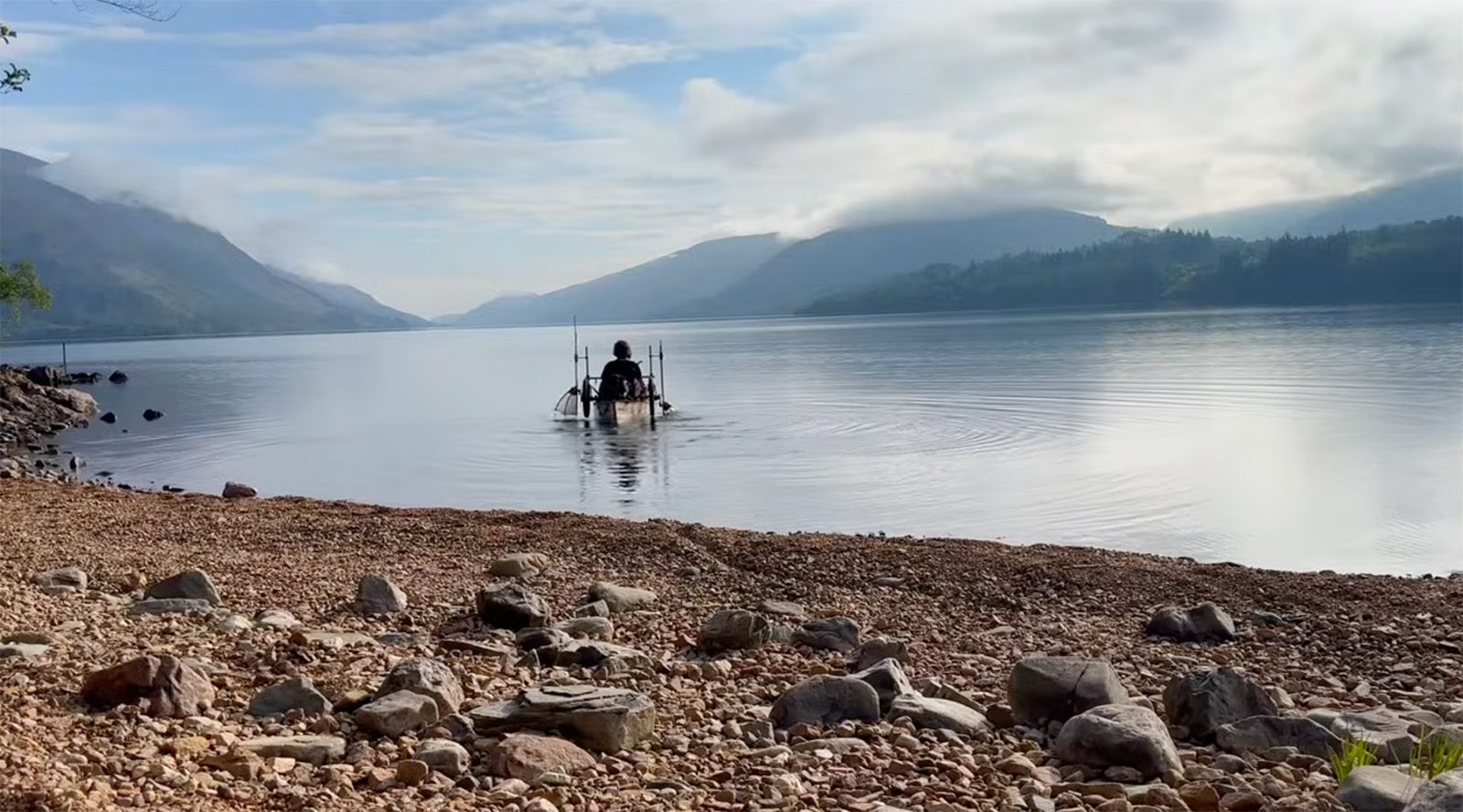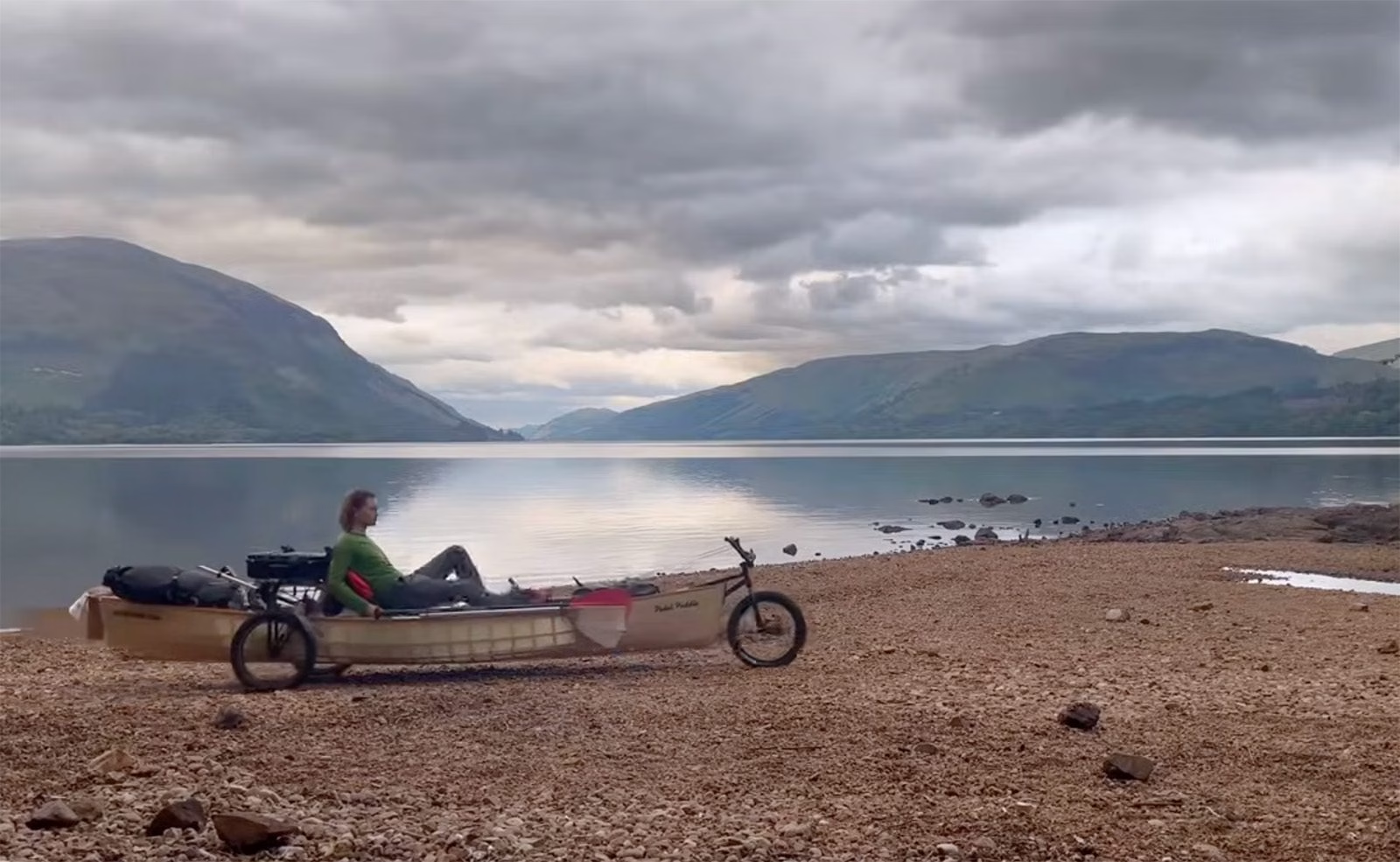For Ben Kilner, building a canoe from scratch was merely the beginning. After crafting a lightweight wooden and fabric vessel, he pushed the limits of ingenuity, transforming it into an amphibious adventure machine using salvaged bike parts. His mission? To cross the Scottish Highlands twice—one way by water via the Caledonian Canal and Loch Ness, and the other by land along the rugged Great Glen Way.
Setting out
Kilner’s water journey began in Fort William, not without hiccups. A crack along the canoe’s gunwale, caused by improper loading, forced a late-night repair with stainless bolts. A test paddle revealed no further damage, but swarms of midges kept the evening memorable. “If you go along with your mouth open, it’s enough nutrients for days,” Kilner joked.
By Day 2, Kilner was gliding along the serene waters of Loch Lochy. His heavily laden canoe proved a balancing act and steep, brambly banks made finding launch points a chore.
Day 3 brought rising winds and waves on Loch Oich, pushing the limits of Kilner’s craft. Deploying a compact sail added speed but couldn’t fully counter the choppy waters. “Some waves were definitely higher than the sides of the boat,” he recounted. Despite the challenges, Kilner reached calmer waters by evening, saved from a grueling portage by a kind lock keeper.
The vastness of Loch Ness
Day four saw Kilner approach Loch Ness, where anticipation and nerves collided. “It’s a lot bigger than Loch Lochy,” he noted, bracing for larger waves. To his relief, the first stretch remained manageable.
More than a personal challenge, Kilner’s journey supported A Leg to Stand On, a charity providing mobility devices to children in developing countries. “Mobility is something you don’t realize the importance of until you lose it,” he reflected, urging support for the cause.
By Day 5, Kilner reached Inverness and the North Sea, marking the end of his water leg. Rain, mist and occasional sunshine defined the quintessentially Scottish weather. The craft’s custom paddle feet and two-wheel-drive system endured admirably, though the strain on his contraption hinted at the challenges ahead.
 Turning around
Turning around
The land return to Fort William brought a new set of hurdles. The Great Glen Way, with steep inclines and rough terrain, pushed Kilner’s engineering—and patience—to the brink. Early in the journey, the drivetrain began slipping, a sprocket folded under strain, and chains stretched beyond safe…
Click Here to Read the Full Original Article at Canadian Cycling Magazine…

